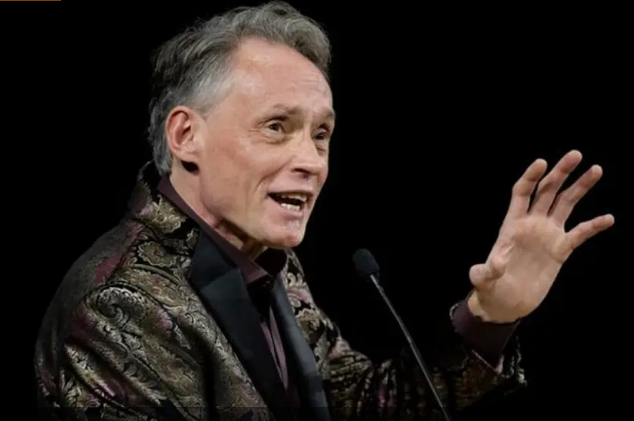Lawrence Carter-Long is an internationally respected authority on the history and evolution of disability in film and media. As the newly appointed Director of Engagement for ReelAbilities, a renowned disability film festival, Carter-Long sat down with Able News to share more about his story and his game-changing work.
You’ve had such a robust career centered on media representation of disability. Can you share more with us about the work you’ve done and how you came to join the ReelAbilities team?
Although I’ve been proudly disabled my entire life, I was not really active in disability advocacy until I saw the movie “Million Dollar Baby” when it came out 20 years ago. I thought I was getting your basic sports film, but when Hilary Swank’s character got sucker punched and became quadriplegic, like a lot of folks in the disability community, I felt I’d been sucker punched too. The rest of the story was basically about the right to die and how she felt she’d be better off dead than disabled. It all came together for me when I discovered that in the novella on which the film was based, by contrast, the character lived. In the film, she decides it’d be better if she was “put down” like an old dog.
I researched the history of this narrative and discovered that over 30 films had been made since the dawn of cinema in 1915 up until “Million Dollar Baby” that advocated for assisted suicide of disabled people and there were zero that I could find showing the other side. And I thought, “whoa, where’s the balance here?” If people don’t understand or relate firsthand to an experience of disability outside the tragic or heroic narratives we’ve been spoon-fed, the lie becomes reality in people’s minds. I couldn’t sit on the sidelines anymore and had to get involved in disability advocacy, specifically and deliberately working on the stories we tell and changing who gets to tell them.
In 2006, I started a film series in New York City called disTHIS! I showcased films that were edgy, underground, independent, presenting a narrative that wasn’t necessarily tragic or heroic, but somewhere in the messy middle with more nuance. That six-month experiment lasted four years because our audience wouldn’t let me stop. It was around then that I began a relationship with the folks at what, in time, became ReelAbilities. They’ve been able to take those foundations and build upon them. In the last year, ReelAbilities became an independent nonprofit organization, and as they’re growing, it made sense given our history for me to officially come on board and add my experience and expertise to the already stellar work they’re doing.
Why is nuanced, accurate media representation of disability so essential?
If the only time you see a disabled person on screen is as a villain or a victim, it does something to your soul and it does something to society. I don’t think it’s overstating it to say that bad representation kills. It shapes the ways we think, and that shapes public policy, and I say this as somebody who worked in communications, in the federal government, on disability policy for seven years. It influences medical decisions. It determines whether decision makers think folks with disabilities deserve the most basic human rights. In terms of opportunities, good representation isn’t just about feeling like you’ve been seen and heard. Sometimes it is literally about survival. In the context of media and entertainment this also applies when you don’t get opportunities to learn, grow, apply your craft, and establish a career.
What most people don’t realize is disabled people have always been part of the entertainment industry, not just as subjects, but as creators, innovators, and pioneers. But much of that history has been hidden or lost. So, my work both prior to and with ReelAbilities is not only about showcasing work that’s being done today; it’s also about giving context to stories that were told in the past, showcasing disabled creatives and the innovative work that they’re doing in the present, and shaping a better future for us all.
So many disabled people have powerful stories to tell but aren’t sure where to begin when it comes to making media. What insight would you share with other disabled people who want to share their stories with the world?
Start where you are. Don’t ask for permission. The gatekeepers, the powers that be, those who don’t understand your story and haven’t lived your life, aren’t likely to invite you in. The reality is that we need to have enough trust in ourselves to knock down those doors and keep it open for others to join us. Your story matters, but for the world to hear it, you’ve got to put it out there—not some watered-down version that makes nondisabled people comfortable, but something disruptive, something new, something real.
As disabled creatives build our own platforms, networks, and movements, the tools are increasingly in our hands. One of the most exciting recent developments at ReelAbilities that I’ve been involved in is our pitch panels, which provide early support to emerging filmmakers while honoring those who paved the way. You don’t have to reinvent the wheel. The wheel is a perfectly good invention—as wheelchair users know—but everyone can add a spoke. Add your story, your flair.
What disability rights issue is your biggest advocacy priority right now?
Economic justice, plain and simple. Fighting for disabled artists to get paid for their work, for disabled actors to get hired, for disabled writers to tell new stories.
In my role with ReelAbilities, one of the things I’m focused on is expanding access on both sides of the camera, building bridges between emerging talent and industry veterans, between emerging filmmakers and existing audiences. In the last year, ReelAbilities was among the first to showcase films with authentic representation like “Daruma” and “Good Bad Things” and “Out of My Mind,” which are now finding new ways of distribution and reaching larger audiences. We had the opportunity to showcase a short film by disabled filmmaker Daisy Friedman, who has a different short film premiering at Sundance this year. There’s truly so much disabled talent out there. ReelAbilities is often one of the first places this work is showcased.
My priority is creating sustainable pathways for disabled creatives while increasing audiences for their work. The entertainment industry has made millions telling monochrome versions of our stories while keeping disabled people in poverty. It’s time for disabled creatives to get a piece of the pie.
Looking ahead, what are you most excited about in your work with ReelAbilities?
When it comes to the depth and breadth of content, ReelAbilities is a cinematic buffet: Comedy. Arthouse. Family fare. Drama. Subtitles. Visual description and sign language. There’s literally something for everyone.
What we’re doing at ReelAbilities is reflective of the changes happening in society. We’re part of a growing community that’s creating an ecosystem where disabled creatives can thrive, not just survive. We’re demanding more than access now, we’re expanding opportunities. No longer asking politely for a seat at somebody else’s table. We’re building our own table, setting our own agenda, creating our own guest lists. Creating and showcasing art that speaks truth to power, and if some things make some people uncomfortable, good, because then we know it’s working. It’s no longer, “Please sir, may I have some more” but rather “lead, follow, or get out of our way.” Those who won’t or don’t are missing out.
The future is not about fitting disability stories into pre-existing boxes. It’s about expanding both opportunity and imagination. Creating new forms of storytelling that illustrate the full spectrum of the human experience. That includes disability, but not as an add on, baked in. Even if you weren’t born with a disability, odds are that if you live long enough, you’re going to be part of the club at some point. So, how do we reflect that? ReelAbilities is not just presenting films, but helping reshape the way disability stories are told, and increasing opportunities for those who get to tell them. It’s an exciting time to do this work. I’m proud to take part in the ongoing evolution.




